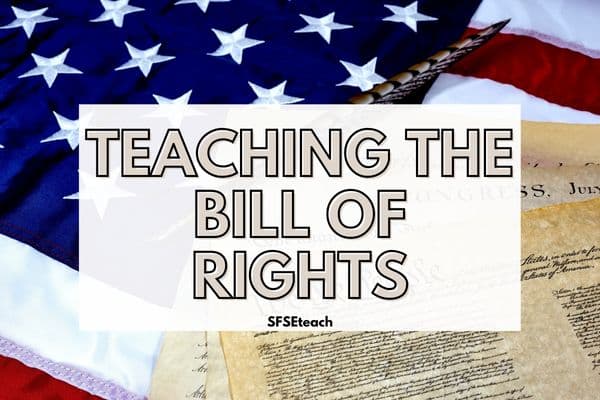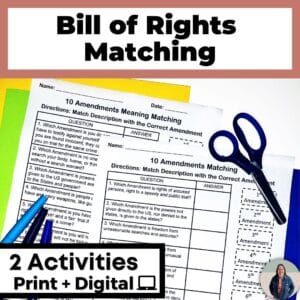The Bill of Rights is one of the most important documents in American history. As teachers, it’s our job to educate our students on its significance and why it is still relevant today. But how can we effectively teach about this important document? Read on to learn some tips for teaching the Bill of Rights.
As a teacher, you can make teaching the Bill of Rights engaging and informative by using interactive activities, simulations, role-playing scenarios and more.
Ideas for Teaching the Bill of Rights
Using Primary Sources
One of the best ways to get students engaged with a subject is by having them interact with primary sources. There are lots of primary source materials available that discuss the Bill of Rights and its implications. Have your students read through these documents and discuss their meaning and relevance in today’s society. This will help them better understand the importance of this document, as well as its connection to current events.
Matching Activities
Are your students confused by the meanings of the Bill of Rights? These 10 Amendments matching activities are the perfect solution and are differentiated for different student levels. This is great for helping all students access grade level content!
These are no-prep matching activities – one option has the literal 10 Amendments and the other has the simplified meaning of the 10 Amendments. Students can cut and paste amendments with their meanings, write the answers in the blank, or complete the activities digitally. An answer key is included! Try teaching the Bill of Rights with these activities. Grab these activities here on my website or on TPT.
Exploring Relevant Supreme Court Cases
Supreme Court cases often have a direct impact on how the rights contained within the Bill of Rights are interpreted and applied today. Have your students research relevant Supreme Court cases and then discuss how those decisions have shaped modern interpretations of certain rights contained within the document. This activity not only helps your students gain a better understanding of the document itself, but also provides them with an opportunity to explore how laws are made in our country today.
Debates
Engage your class with debates related to civil rights issues such as freedom from unreasonable search and seizure or freedom from cruel and unusual punishment. Each student should be assigned a specific side (or Amendment) that they must defend against their opponents’ arguments. Through this exercise, your students will become more aware both of their own opinions on civil liberties issues as well as how others may feel differently on these topics—all while honing their critical thinking skills!
Incorporating Current Events
It can be difficult for students to understand why something like the Bill of Rights is still so relevant today if they don’t see it applied in real life situations. Incorporate current events into your lesson plan, encouraging your students to think critically about how rights contained within the Bill of Rights are being utilized today or violated in certain scenarios. This will help your students make connections between what they’re learning about in class and what’s happening around them every day.
Teaching the Bill of Rights in Your Classroom
Teaching the Bill of Rights doesn’t have to be dull or rote memorization; there are plenty of engaging activities you can do with your students to ensure they gain a thorough understanding of this important document and its implications for American society today. By utilizing primary sources and incorporating current events into lessons, you can bring this document alive for your students and help them gain a better appreciation for its importance throughout history as well as present day life in America!
Do you want a free scope and sequence for planning US History? Check this out!










